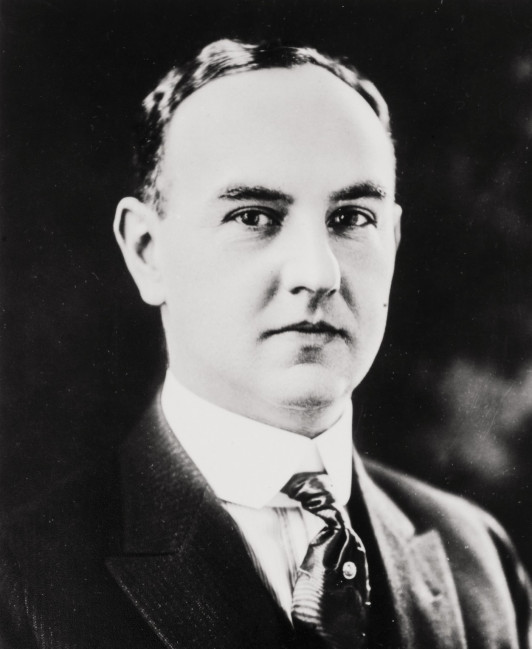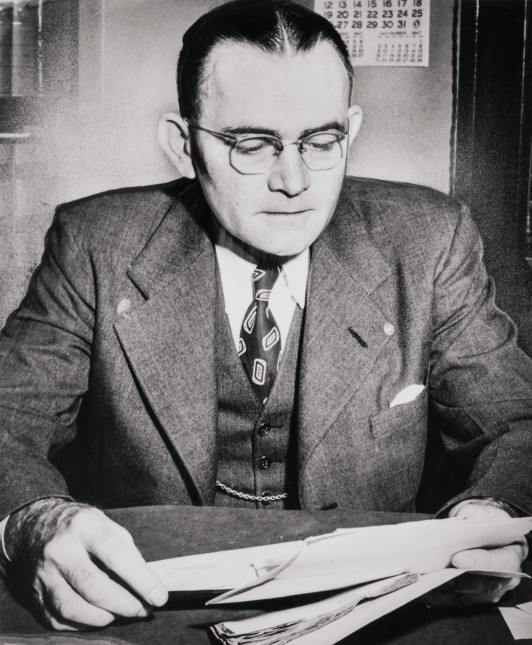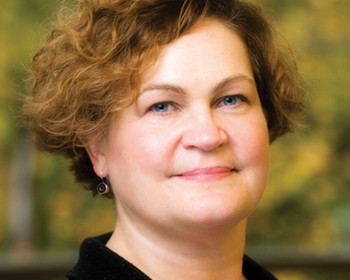Three Eminent Ties to Apron Strings
Professor Emeritus Ron Lansing comments on links to Oregon’s highest office.
By Ron Lansing, Professor Emeritus of Law
This report is a boast. It honors three top Oregon State executives who have two features in common: They are alumni of the same law school and have succeeded as Governors: three ties to the apron of this alma mater.
Since its founding 156 years ago, the State of Oregon has had 35 men and two women in its governor seat. Prior to statehood, Oregon pioneers elected one Provisional Governor and had five nonelected Territorial Governors appointed by U.S. Presidents. Of the 37 State Governors, thirteen were and are lawyers. So, this school can claim about one of every twelve state governors, and about one of every four lawyer governors. So much for the boast.
As foresaid, this report is also about “succeeding”—a contranym that can mean either winning or ensuing—a difference between first or follow—precedent or sequent—the thrill of victory or the fill of vacancy. To succeed “at” something and to succeed “to” something are not the same—but leave in the same fix.

Julius L. Meier was the 20th Oregon Governor. He graduated from Portland law education in 1895. His bachelor degree in law bore the sheepskin label: “University of Oregon.” And that’s where ambiguity in his alumnus origins begin.
In 1884, the University of Oregon opened a Department of Law in its arts and sciences schooling and located it in the City of Portland, far from its Oregon campus in the City of Eugene. It was to be a nighttime education taught by judges and lawyers with one full-time faculty professor in charge. Two decades later, that leader, Calvin Gantenbein, was titled “Law Dean.” Then, in 1915, the University decided to close the Portland law department and to open a law “school” on its Eugene campus. Dean Gantenbein, however, promptly decided to continue the law schooling in Portland under his proprietorship. Virtually, all of the teachers and students remained in Portland with the same quarters, classrooms, calendar, curriculum, and classmates. Most of the meager law library stayed in the Portland halls. Only the name changed. Gantenbein renamed it, “Northwestern College of Law.”
Consequently, was Governor Meier a graduate of the Portland school, now dubbed “Northwestern”? Granted, his graduation degree bears the title “University of Oregon,” but where was the schooling? Was it the one afforded at night through the years or the one ceremonially bestowed on sheepskin at end of years? Is “school” a name or an experience? Over decades, as the results of divorce, merger, and common parlance, this Portland schooling has traveled under a succession of four different names. Do those names change the named? Do heredity and ancestry alter by mere evolving nomenclature? Which fosters upbringing: owner or mother? Is Mona Lisa the painting of DaVinci or of the Louvre Museum? Does the flower called “Rose” stem from that word or from its roots?
Julius L. Meier was elected governor in 1930, served from 1931 to 1935, and did not choose reelection. His term was in the depths of the Great Depression years. Prior years at being the chief executive of the successful Meier & Frank Department
Store served him well at pulling Oregon through rough fiscal times. He was more than business adroit, he was also environmentally concerned long before that was a popular movement. He has been called “one of Oregon’s strongest governors.”
As for the word “succeeding,” Meier fits both meanings: His status as a law alumnus in Portland was set in 1915 by this school’s succession. His status as an able governor was set in the 1930s by his own success.
Born in 1872 and governor at age 59, he died in 1937.
The two other “governor-grads” have no trouble in verifying their alma mater. Both have diploma degrees from this school—albeit one sheepskin is headlined “Northwestern College of Law” while the other reads “Northwestern School of Law of Lewis & Clark College.” The latter name was part of the bargain struck when in 1965, two pioneer schools merged. Thus, once again the school took a new name, but its graduates, old and new, associate together.
But, in order to fit the boast, do the two alums also fit “succeed”? They do—provided it is clear what is meant. Sadly enough, both were successors destined by law to be seated in ill-fated vacancy.
A governor seat can be vacated by death, disability, resignation, or any other removal provided by law. In Oregon, it has happened more than 20 percent of the time: eight vacancies— four by death, three by release of reins due to health, and one by release of reign due to public disgrace.
For such spills and emptiness, law provides a list of refills, called “succession.” Oregon law, through the decades, has vamped and juggled a number of revisions in that listing. Four state officer titles have been ranked: Secretary of State, State Treasurer, President of the Senate, and Speaker of the House. In Oregon, the order of succeeding prior to 1920 put the Secretary first followed by the Senate President. A 1920 amendment turned it around, putting the President first, then the House Speaker, ahead of the Secretary. A 1972 amendment changed the order back to the Secretary first, then the Treasurer, then the President, and the Speaker last.

John Hubert Hall graduated from Northwestern College of Law in 1927. Typical of Portland night students, he had worked his way through law study with day jobs at hard labor, gas tank refilling, police and county deputy work. At law school, he was a founder of a student organization called Praetors, which appears to be an alternative to the traditional Greek fraternities of that day and age. A cartoon caricature of him in the 1927 Nor’wester yearbook chides him for weak class attendance.
After law school and practice of law, he became an elected member of the Oregon House of Representatives and served four or five legislative sessions there scattered over the period 1932 to 1947 interrupted by military service in World War II. He was chosen Speaker of the House for the 1947 Legislative Assembly; that position lasted no longer than just that. He was removed from that office under dire circumstance.
On October 28, 1947, a plane crashed in southern Oregon. It killed its four occupants: the pilot, plus three top officials of the State: the Governor, the Senate President, and the State Secretary. Suddenly, House Speaker Hall was catapulted into 24th Governor of Oregon. His rise to chief executive swept past two deaths. Had the 1972 order of ascent been in place, the State Treasurer would have governed.
As governor, Hall served a bit over 14 months (1947-1948). Serving in those waning months of his late predecessor’s term, he was said to be a “courageous, formidable fighter” but “cocky.” Steadfast and forthright are values but, when set firm to bitter end, are not the makings of finesse. Editor-author George Turnbull put it this way: “Greater tact could have been advised…but try to make him believe it.”
Before his political career, Hall had practiced law with Jay Bowerman, who back in 1920 also had succeeded to Oregon’s governorship from his Senate Presidency seat. Like Hall, Bowerman’s succession also had opened by two quick departures; both preceding governors had resigned within sixteen months of each other. Befittingly, Ex-Governor Bowerman swore in Hall as Governor. Like Bowerman’s term of office, Hall’s term proved short. Although incumbent, Hall lost his Republican Party’snomination for continuance.
Born in 1899 and governor at age 48, he died in 1970.

Katherine “Kate” Brown graduated from this law school in 1985. Her political career commenced six years later when she was appointed to fill a vacancy in the Oregon House of Representatives.
Following that succession, she became a campaigner for votes and was a success at many elections—a more successful way of succeeding. Over the next 23 years, voters put her into the Oregon House for five years, the Oregon Senate for twelve years, and the Oregon Secretary of State office for six years. Her final rise came by return to succession. There was but one higher step she could reach in Oregon governance, and it opened and reached out for her. The vacancy was not as dire as men dying in a plane crash. But it was a crash and dire enough. The incumbent predecessor (a medical doctor) had taken the oath of governor for the fourth time. His prior 12 years as governor in two separate regimes is the longest at the helm in Oregon history. After just one month into his fourth term, he resigned. Charges of corruption ignited scandal too burning for public trust to bear.
So, once again a Portland law school alum was first in line to fill the gap and third in line to honor this alma mater. On February 18, 2015, Secretary of State Kate Brown was sworn into Oregon’s 38th regime of governance—the 37th person and second woman to do so. Had there not been change in the order of succession in 1972, the Secretary of State would have been last in order of succession and the Senate President would have been governor.
Governor Brown filled the empty seat at a desk tainted by reported disgrace. Disillusioned electorate was just a part of a wider gloom spread throughout the nation, where folks were losing faith in officers and their antics in law-making, law-interpreting, and law-enforcing. The new governor was not just seated, she would have to step up. Restoring confidence was prime order in new doctoring.
Where her predecessors, Meier and Hall, left legacy, Governor Brown has yet to blaze that trail. Heritage awaits her. There is, however, prophecy and promise to give us a peek: While her political career began with and is now bookended by succession, she has shown at the polls her potential for success. The Aspen Institute puts her as one of the “24 Rising Stars in American Politics.” She hugs and is tagged with these aptitudes: tenacious, personable, congenial, outgoing, and effective. She knows how to be formidable without stubborn—how to be forthright without brash; how to put tender with tact and still be genuine. What she is, is how she lives; and how she lives is open and honest.
Born in 1960 and Governor at 54, she soars and still hits the ground running.
While the three governors featured here have résumés sharing the same top seat and also the same graduate college, there is divergence in those lineages.
For one, their governor tenures were separated by more than 80 years. Oregon regimes have been as tight as four men in just four years (1909 to 1913) or as wide as just one woman and two men in the quarter century preceding Brown (1991 to 2015). Wide spread in time puts politics into differing socioeconomic-scientific milieu. Contrast a 20th term of governance in an economic depression era; a 24th term in a postbellum recovery era; and a 38th term in a 21st century world swirling in movements, cybernetics, ecology, and global awareness.
Then too, the three governors politicked at differing parties: Democrat Brown, Republican Hall, and Independent Meier. For still more name difference, their law graduation tickets bear different scraps of title—one reading “Oregon,” another reading “Northwestern,” and a third reading “Lewis & Clark”—all grounded in the same school.
And for a final divergence, the development of their middle names was indicative of their varied times. Hall’s middle name (Hubert) was custom born to match his namesake father. Brown’smiddle nickname (Kate) is born in textings of anything too long for chat. Meier had no middle name. He invented his middle initial (L.) after becoming a lawyer, because in the 1890s without that initial a man was not deemed a prominent citizen.
While all of that nonalignment in tempo, times, topic, and title may suggest dissonance, it’s really music to this school’s ear—a nose alert to tradition, an eye bent on legend. Whether succession or success, whether fill or fulfillment, what is fixed here are three ties to one apron. That knot is a third commonality beyond chiefs and foster links. The three beings and all others schooled here are attended by a Mater and Her consort who pay mind, take stock, and keep a winsome watch that never ends at graduation.
More Advocate Magazine Stories
email jasbury@lclark.edu
voice 503-768-6605
Judy Asbury, Assistant Dean, Communications and External Relations
Advocate Magazine
Lewis & Clark Law School
10101 S. Terwilliger Boulevard MSC 51
Portland OR 97219

